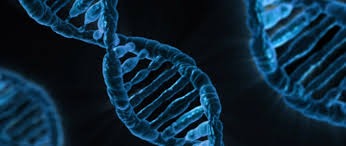Unlocking the Future of Medicine: CRISPR Gene Editing Therapies as a New Frontier
There’s a quiet revolution happening in science labs around the world. It doesn’t involve new planets, flying cars, or teleportation. It’s something much closer to home—your own DNA. In the last few years, the technology called CRISPR has gone from obscure acronym to household buzzword. Not because it’s trendy, but because it might just be the key to curing diseases we once thought untouchable. Welcome to the future of gene editing therapies.

What Exactly Is CRISPR, and Why Is Everyone Talking About It?
Let’s break it down without the science jargon. CRISPR, which stands for “Clustered Regularly Interspaced Short Palindromic Repeats,” is like a search-and-destroy tool for genetic errors. It works hand in hand with an enzyme called Cas9. Together, they operate like a guided missile system. The guide RNA finds the bad gene, and Cas9 snips it. Once cut, the DNA tries to fix itself—and that’s where scientists can step in to correct or even upgrade the genetic code.
Sounds like something from a sci-fi movie, right? But it’s not fiction. This is happening now.
CRISPR in the Clinic: Where We’re Seeing Results
It didn’t take long for CRISPR to leap from theory to therapy. One of the most promising areas is in treating blood disorders like sickle cell disease and beta thalassemia. Patients who once faced a lifetime of pain and hospital visits are now walking away from clinical trials with something close to a cure. All from a single treatment.
And it doesn’t stop there. Researchers are targeting cancer, HIV, inherited blindness, and even neurodegenerative diseases. Some trials are still early, but the momentum is undeniable.
Hope, Hype, and a Few Hard Questions
Now for the other side of the coin. Yes, CRISPR is powerful. But with power comes problems. One of the biggest? Ethics. There’s a world of difference between using CRISPR to cure a sick child and using it to engineer a smarter or taller baby. In 2018, when a scientist in China claimed to have edited human embryos to make them resistant to HIV, it triggered a firestorm. Why? Because those edits could be passed down for generations.
This isn’t just about curing disease. It’s about altering the human race. And not everyone agrees on where the line should be drawn.
Getting CRISPR Into the Body: A Delivery Dilemma
Editing DNA in a lab is one thing. Getting CRISPR into the right cells in a living body? Whole different challenge. Right now, most therapies rely on viruses to deliver CRISPR. Think of them as Uber drivers for the gene-editing tool. But they come with baggage—like the risk of triggering an immune response or delivering the tool to the wrong place.
That’s why scientists are also exploring non-viral options like lipid nanoparticles. These tiny fat bubbles can slip CRISPR into cells without setting off alarms. Progress is happening, but there’s still a long road ahead.
The Next Generation of Gene Editing
CRISPR isn’t done evolving. Scientists are now working on newer forms like base editing and prime editing. These offer more finesse—changing a single letter in the DNA without cutting the strand. It’s like using a pencil eraser instead of scissors. This could reduce the chance of off-target effects and bring even more conditions within reach of a cure.
Not Just Medicine: Other CRISPR Possibilities
The possibilities don’t end at health care. CRISPR could change farming by creating crops that resist drought and pests. It might be used to control mosquito populations and fight malaria. Some researchers are even exploring anti-aging therapies. And yes, there’s talk about CRISPR in synthetic biology and national defense, which is both exciting and terrifying.
So, Where Do We Go From Here?
We’re at a tipping point. CRISPR-based gene editing therapies are already rewriting medical textbooks, but we still need strict guardrails. Regulation. Oversight. Ethical frameworks. Without those, we risk turning a medical miracle into a moral nightmare.
Still, there’s reason for optimism. With smart policy, open dialogue, and continued research, we could see a world where inherited diseases become rare stories from the past—not lifelong burdens.
Final Thought
CRISPR is not just a tool. It’s a symbol of what’s possible when science meets courage and curiosity. If handled wisely, it could be one of the greatest achievements of our time—a way to heal at the level of our very code.




